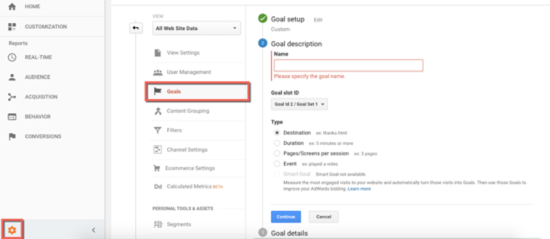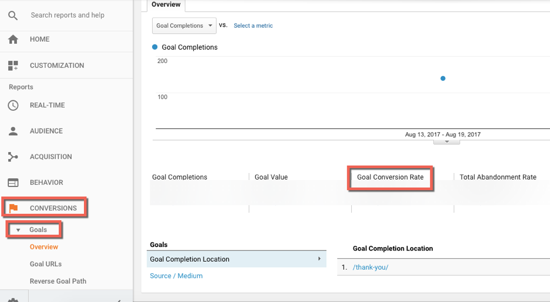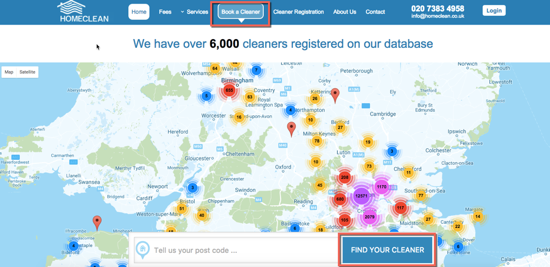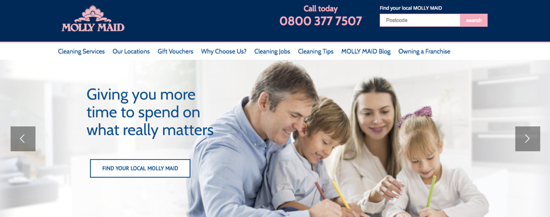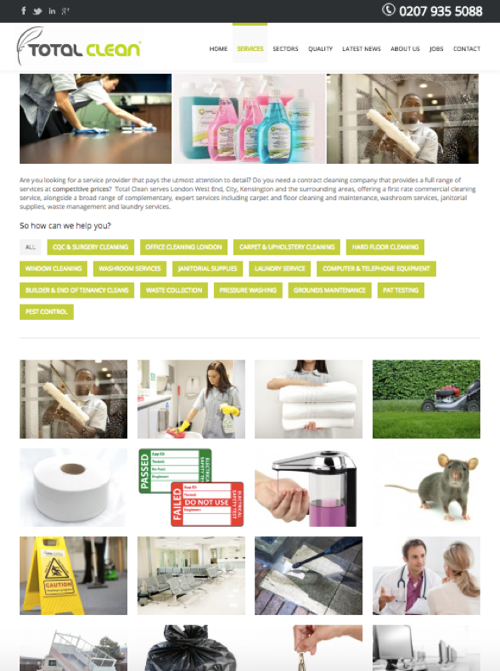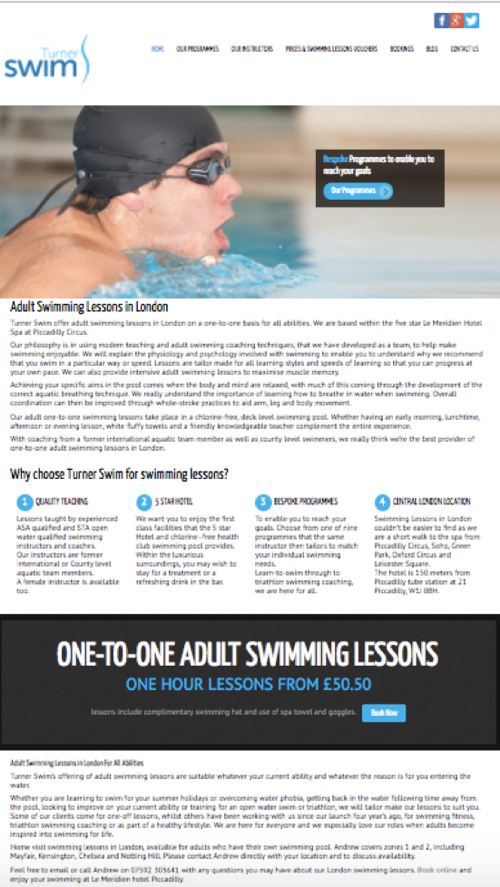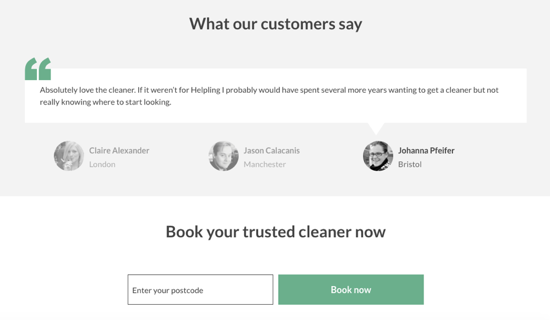Why conversion rates matter for your small business site (and how to improve them)
Does this sound familiar?
“I built my website, promoted it on social media and Google through paid ads, and I’m getting lots of visitors. But no one is buying.”
It happens to lots of small businesses. You get your site up and running. It looks nice, it seems easy to use and it’s also mobile-friendly. So now all you need to do is get lots of traffic and then money will start rolling in. If only it were that simple.
Getting your site up and running, and driving traffic to it – these are just the first steps to building a profitable business. But turning visitors into customers, that doesn’t just happen the moment they land on your site. You need to optimise your site so that visitors end up taking the action you want them to take.
In this article we’ll explain why conversion rates are important for your small business site, how to track them, plus some effective tactics get those rates up and increase your revenue.
But first, let’s define a conversion.
What is a conversion?
A conversion is any action that you define. It all depends on your goals and what you want to achieve.
For example:
- If you have a travel blog, you may want visitors to sign up for your newsletter.
- If you have an online shop, then you want people to buy your products.
- If you’re an app developer, you want visitors to download and/or buy your app.
- And if you’re a consultant, you want people to contact you.
So a conversion is an action you want a visitor to take when they land on your website.
How do you calculate conversion rates? Easy.
A conversion rate is the total number of conversions divided by the number of visitors to your site. For example, if your site receives 5,000 visitors and 50 conversions for a set period, that means your site’s conversion rate is 1%.
Why conversion rates matter
Knowing your conversion rates is a first step in understanding how your site is performing and what marketing avenues are giving the greatest return on investment (ROI).
Here are three key reasons why keeping an eye on your conversion rate is so important:
It helps to uncover “friction points” on your site
The main reason why conversion rates matter is because they reveal a whole bunch of vital things about your website’s performance and success.
They can tell you whether:
- Your site’s navigation is confusing and users can’t find their way around your site.
- Your content isn’t informative or if your calls-to-action aren’t strong enough, which is why people leave your site without taking any action.
- Your site lacks elements to make it trustworthy so people feel comfortable and safe buying from you.
- There are errors throughout your site, like on your contact form or purchasing process which is preventing them from finalising their order.
So tracking conversion rates can make you aware of issues on your site that are preventing visitors from moving forward and that need urgent attention or improvement.
You can save money on paid advertising
Spending more money on getting hundreds or thousands of people to your site is not the answer to boosting conversions. Because what’s the point in attracting heaps of traffic if there are hiccups in your conversion funnel that need to be addressed first? You’ll only end up wasting that money.
However, if you focus your efforts on the traffic you already have, on measuring your current conversion rates and identifying potential issues first, you can then take the steps to fix them and boost conversions.
So, in fact, converting a higher percentage of your current visitors will cost you less than attracting new ones.
There’s always room for improvement
While there’s no such thing as perfect, there is almost always better. So no matter how well (you think) your site is doing in terms of traffic and sales, you can always do better.
If your contact form is too long, you can test shorter versions to entice more people to fill it out. If there are too many steps to buy a product, you can probably find ways to make the process easier, and see if that leads to more sales.
So, how do you track conversion rates?
There is a variety of analytics tools to track your site’s conversion rate. But the two most important ones to use are Google Analytics (GA) and Google Search Console.
With GA you’ll get some great insights into your site visitors, including:
- How visitors found your site
- How much time they spend on it, on average
- Whether they’re new or returning
- If they used a mobile device or desktop/ laptop
- How many of them converted, based on goals setup
To learn more about it, from how to set it up to other cool data that you can find there, make sure you read our beginner’s guide to Google Analytics.
On the other hand, Google Search Console shows you various errors and issues that may affect your rankings, such as slow loading pages, broken links and more. Find out more about it from our complete guide to Google Search Console.
Ok, so how do you track conversion rates?
The simplest way is to set up goals in GA. You can set up goals to measure any action you want visitors to take on your site, from email newsletter signups and event registrations to product purchases.
To set up a new goal, click on the settings icon in the left corner and then click on Goals, followed by “+New Goal”, and then follow the steps.
You can then find and track your conversion rate in GA under Conversions -> Goals:
For a more detailed overview of how to set up a Google Analytics goal, check out the Google Analytics support article.
What’s your ideal conversion rate?
If we were to give you stats and industry averages – what would you do with that information?
Let’s say your ideal conversion rate is 5%. What now? What would you do differently?
If yours is 5%, would you sit back and relax? And if it’s 2%, would you work harder?
Here’s the thing: you should always be working hard to improve your rates, regardless of what the industry average is.
The industry average is largely contextual as it depends on a variety of factors, from how popular your brand is to how much quality traffic you get and from different sources.
I like how Peep Laja from ConversionXL explains it in this article:
“The average conversion rate of a site selling $10,000 diamond rings vs an ecommerce site selling $2 trinkets is going to be vastly different. Context matters.”
So forget about comparing your conversion rate to the industry average. Instead, compare it to yours. If yours is higher than what you had last month, that means your marketing efforts are paying off. So those are the only rates you should be focusing on.
Bottom line: just strive to increase your conversion rates as you move forward and improve your site and marketing strategy.
Eight ways to improve your site’s conversion rates
Now let’s look at a few ways to boost your conversion rates and put more profit in your pocket.
1. Make your call-to-action clear and easy to find
Every page on your site should be a gateway to an action, whether to make a sale, to sign up for a newsletter or to get a call.
So if you want visitors to know what they should do next, have a killer call-to-action (CTA) that’s clearly visible, attention-grabbing and action-oriented.
That also means using clear and concise phrases which tell visitors what will happen after the click. For example, CTAs like “Start a free trial”, “Sign up for a demo”, “Download the app” or “Add to cart” are clear, while a CTA like “Click here” is confusing.
Here’s an example:
The best course of action? No matter what business you’re in, the best way to decide on the most powerful CTA is through A/B testing. This allows you to test small changes like button colour or text and see which version gets the best results.
You can find out more about it from our beginner guide to A/B testing where we also walk you through the steps to getting started with your first A/B test.
2. Be picky with your graphics
Are your images and graphic elements relevant, well-placed, clean and unique?
Or are they distracting and overwhelming in number?
So try to keep visuals to a minimum as too many can overwhelm visitors and can also show down your site. A site that takes too long to load can drive prospects away and it can also hurt your rankings in the search engine results.
When it comes to your images, make sure they’re relevant to what you’re promoting on your site and also appealing so they draw users in.
If you’re on a budget, you can always take photos using your smartphone. If that doesn’t appeal to you, there are loads of places where you can find stock images, no matter your budget.
3. Remove all unnecessary text
When users land on your site, you want to make sure you answer their questions and concerns, and give them all the information they’re looking for. But that doesn’t mean you need to overdo it with a wall of text the second they enter your site.
Adding too much irrelevant information on your web pages is dangerous because it dilutes your message, overwhelms visitors and hurts your conversion rate. If your visitors are slammed with blocks of text, they’ll have a difficult time figuring out what you’re offering, or whether they want it, or converting with your (almost always buried) CTA.
Take this homepage as an example:
This page has limited conversion potential because it includes so much unnecessary information. Just look at those massive blocks of text!
Remember that everyone, your audience included, scans text online. So take a closer a look at the copy on your web pages and figure out which info is nice-to-know and which is need-to-know. Then start decluttering each page and only keep the necessary info that can contribute to a visitors’ decision to buy from you.
4. Usability is key
Put on your customer hat and take a look at your site’s usability:
- Can visitors quickly find what they’re looking for?
- Is the navigation visible and intuitive?
- How many clicks/ steps and pages does it take to complete the conversion you’re measuring?
- Do they understand where to click to download your app, or how to complete the checkout process and finalise their purchase?
- Is there a mobile version of your website?
It doesn’t matter if you have an online shop where you sell bikes or if you’re trying to get more visitors to sign up for your newsletter. If people are so confused by your site that they don’t understand how to use it, don’t be surprised if few of them take action.
To boost conversions, you need to do some serious usability testing and fix your website. Our article on user experience testing walks you through the different kinds of tests, how they can help you improve your site, and how to carry out your own tests.
5. Show you can be trusted
When visitors land on your site, is it clear that their security is your top priority? Is it easy to trust your website?
This is a big deal and it can make a huge difference in conversions.
You need to build a certain level of trust in a short amount of time for prospects to be willing to give you their details and/ or credit card information. They need to know that they’re dealing with a legitimate business that has security measures in place to ensure their information is safe and secure.
Here’s how you can do that:
- Add an SSL certificate to your Find out more about the SSL certificates from 123 Reg and how it can help secure your site and boost conversions.
- Use icons for PayPal, credit cards and other payment options as a visual signal that you use trustworthy payment options.
- Use and display security badges on your site.
6. Do SEO the right way
Are you using accurate titles, relevant keywords and meta data? If these elements aren’t relevant, people may be coming to your site from search engine results only to discover you don’t offer what they’re looking for.
And those who seek your business may be unable to find you because your meta title and description aren’t optimised properly for search engines.
So take the time to review your meta data to ensure everything’s accurate so when people arrive on your homepage or a specific landing page, they find exactly what they expected to find.
Read our guide on writing title tags and meta descriptions to learn about the importance of these tags and how to write them to ensure they’re in accordance with the content on your site.
7. Use social proof
You probably know the saying: “Facts tell, but stories sell”. This means that if you want to boost conversions, there’s nothing more powerful like social proof.
So, put those customer testimonials to work and display them on your site to tell visitors how happy they are with your products or services.
Here’s a good example:
The following guides are filled with great tips and advice on how to convince customers to provide you with their testimonials and how to use them to boost conversions:
8. Optimise your contact forms
Sometimes having a detailed contact form with more fields can improve your conversion rate. And other times, fewer fields tend to result in a higher conversion rate.
While there are stats and studies to support each situation, the point is this: don’t look for rules of thumb. The only way to find out what works for you and your audience is to A/B test your forms yourself. Based on the results you can see whether adding or removing some fields can lead to more people filling out your contact form.
Wrapping up
These are just a few things you can do to get those conversions up. Just remember that every website is different. So if you read reports of amazing success from changing CTA button colours, that doesn’t mean the same tweak will yield the same results for your site as well.
So when looking to improve your site and your conversion rates, always test and find what works for you and your audience. If you’re still struggling with the issues we’ve covered here, check out our Online Business Training courses. There are several modules that will help you in your quest to improve conversion rates.

